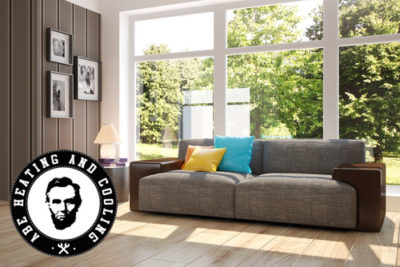“Excellent customer service! Same day appointment and our technician Craig was able to arrive way earlier than scheduled. Very professional and courteous. Thank you ABE for your prompt response and attention.”
Blog
 Energy-efficient homes, both new and existing, require mechanical ventilation to maintain indoor air quality. There are four basic mechanical whole-house ventilation systems – exhaust, supply, balanced, and energy recovery.
Energy-efficient homes, both new and existing, require mechanical ventilation to maintain indoor air quality. There are four basic mechanical whole-house ventilation systems – exhaust, supply, balanced, and energy recovery.
Here is a brief overview of each type of whole-house ventilation system:
An exhaust only ventilation system uses a series of small exhaust fans in strategic areas of your house. Generally, the fans are located around the kitchen or the bathrooms to remove stale air and moisture from the area.
The fans create negative pressure on your home. In many cases, small leaks allow air into the house or the system has intentional air inlets to address the negative pressure.
Since the system is low-cost and simple, it is a good option for ventilation. The primary downside of the system is that the negative pressure may pull in soil gases you want to keep out of your house.
A supply ventilation system is a mechanical solution that uses a fan to bring in fresh air. The air moves through ducts into the house and creates pressure in the house. The pressure prevents soil gases from getting into the home.
The downside of the ventilation system is the potential for excess moisture. The moisture can move into the walls and build up, resulting in condensation and possible issues related to moisture in the walls and ceiling.
A balanced ventilation system has separate fans to bring air into the house and push air out of the house. The exhaust is separated from the ducts, which allows a balanced flow of fresh and stale air into and out of the home.
The downside of this type of system is the cost. It costs more to install and maintain the system when compared to other options. It also does not prevent moisture from coming into the house with the fresh air.
A balanced system with heat or energy recovery is a system that uses fans located near each other so the indoor air preconditions the outdoor air. The system uses an air to air heat exchanger. An energy recovery system is similar, but it also transfers the moisture as well as the heat. The result is a lower risk of moisture build up and better ventilation in cold climates.
The system is energy efficient and cost effective in cold climates. The downside of the system is initial installation expense and the maintenance requirements. In addition, it may require more maintenance than other systems.
Notifications